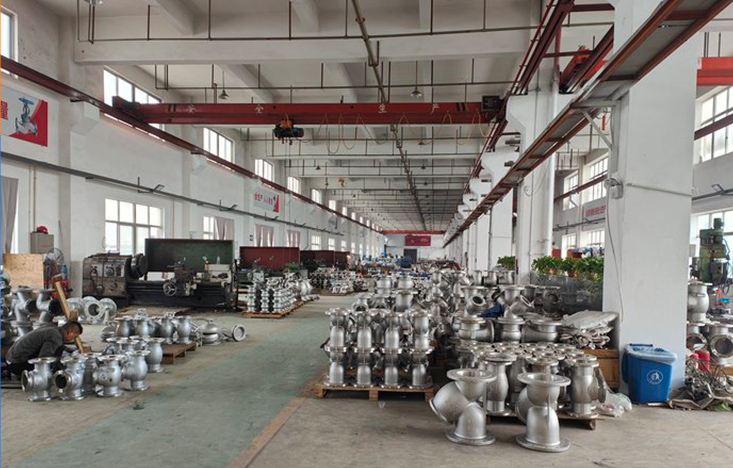Electric Actuators for Efficient Operation of Steam Control Valves in Industrial Applications
Steam Control Valves with Electric Actuators Key Insights and Applications
Steam control valves with electric actuators play a crucial role in the efficient management of steam systems used across various industries. These components are essential for regulating steam flow, maintaining optimal operating conditions, and ensuring that processes perform smoothly and safely. Understanding their functionality, advantages, and applications can significantly enhance operational efficiency and reliability in industrial setups.
Understanding Steam Control Valves
Steam control valves are mechanical devices used to control the flow and pressure of steam in a system. They function by throttling the flow of steam through the valve when the valve opens or closes, which ultimately controls the energy delivered to steam-consuming equipment and processes. The main types of steam control valves include globe valves, gate valves, and ball valves, each having specific operational characteristics that make them suitable for different applications.
Role of Electric Actuators
Electric actuators are devices that convert electrical energy into mechanical motion. When integrated with steam control valves, they provide precise control over valve position and, consequently, steam flow. Electric actuators can be easily managed with automated systems, allowing for quick adjustments based on real-time data from sensors monitoring parameters such as pressure, temperature, and flow rate.
Advantages of Electric Actuators in Steam Control
1. Precision and Reliability Electric actuators offer exceptional control accuracy, allowing operators to set and maintain desired conditions with minimal deviation. This precision minimizes the risk of system overloads and ensures safety without frequent manual intervention.
2. Automation Compatibility With the rise of Industry 4.0, adding electric actuators to steam control valves facilitates the integration of smart automation systems. These systems can optimize operations by adjusting valve positions based on demand, modifying steam flow in response to changes in process conditions, and enhancing energy efficiency.
3. Ease of Maintenance Electric actuators typically require less maintenance than pneumatic actuators, which rely on compressed air systems that can be prone to leaks and require regular upkeep. This ease of maintenance can translate into lower operational costs and decreased downtime.
4. Fast Response Times Electric actuators can respond quickly to input signals from the control system, providing rapid adjustments to steam flow. This responsiveness is critical in processes that require dynamic steam management to prevent temperature fluctuations and maintain product quality.
steam control valves with electric actuators

5. Energy Efficiency Electric actuators can improve overall system efficiency. By precisely controlling the steam flow, they help optimize energy consumption in steam generation and utilization, thereby reducing operational costs and benefiting the environment.
Applications in Industries
Steam control valves with electric actuators are prevalent in various industries, including
1. Power Generation In power plants, they regulate steam flow to turbines, controlling the overall energy output. They help ensure that plants operate at peak efficiency while adjusting to fluctuating power demands.
2. Food and Beverage In this industry, steam is often used for cooking, heating, and sterilization processes. Electric actuators help maintain precise steam control, which is vital for product quality and safety.
3. Chemical Processing Many chemical reactions require stringent temperature and pressure controls that depend on precise steam flow management. Electric actuators contribute to maintaining optimal conditions, ensuring safety and efficiency.
4. Pharmaceuticals In pharmaceuticals, it is crucial to maintain strict environments during production processes. Electric actuators in steam control valves facilitate this by allowing for accurate regulation of steam temperature and pressure.
5. HVAC Systems In large heating, ventilation, and air conditioning systems, electric actuators control steam flow to heat exchangers, maintaining comfortable indoor conditions while optimizing energy use.
Conclusion
Steam control valves with electric actuators represent a significant advancement in steam system management. Their benefits—precision, reliability, ease of maintenance, fast response times, and energy efficiency—make them indispensable in modern industrial applications. As industries continue to evolve and seek automation and efficiency improvements, the integration of electric actuators with steam control valves will undoubtedly play a key role in enhancing operational performance and sustainability.
-
The Key to Fluid Control: Exploring the Advantages of Ball Valves in Industrial SystemsNewsJul.09,2025
-
The Versatile World of 1, 2, and 3 Piece Ball ValvesNewsJul.09,2025
-
Stainless Steel Ball Valves: The Ideal Choice for Efficient Flow ControlNewsJul.09,2025
-
Optimizing Fluid Control with Ball Float ValvesNewsJul.09,2025
-
Manual Gate Valves: Essential for Control and EfficiencyNewsJul.09,2025
-
Everything You Need to Know About Butterfly ValvesNewsJul.09,2025
-
The Versatility of Wafer Type Butterfly ValvesNewsJul.08,2025




